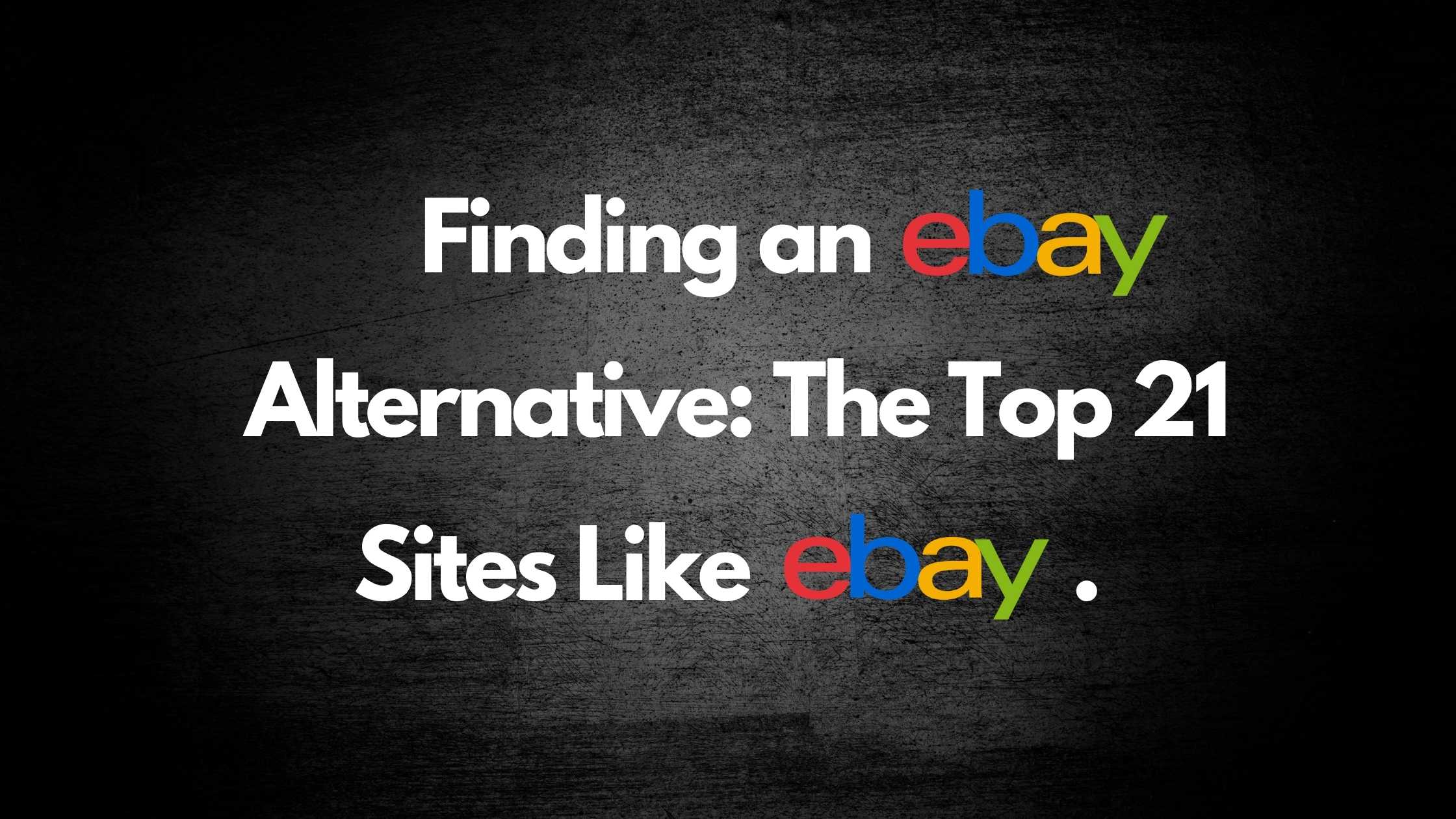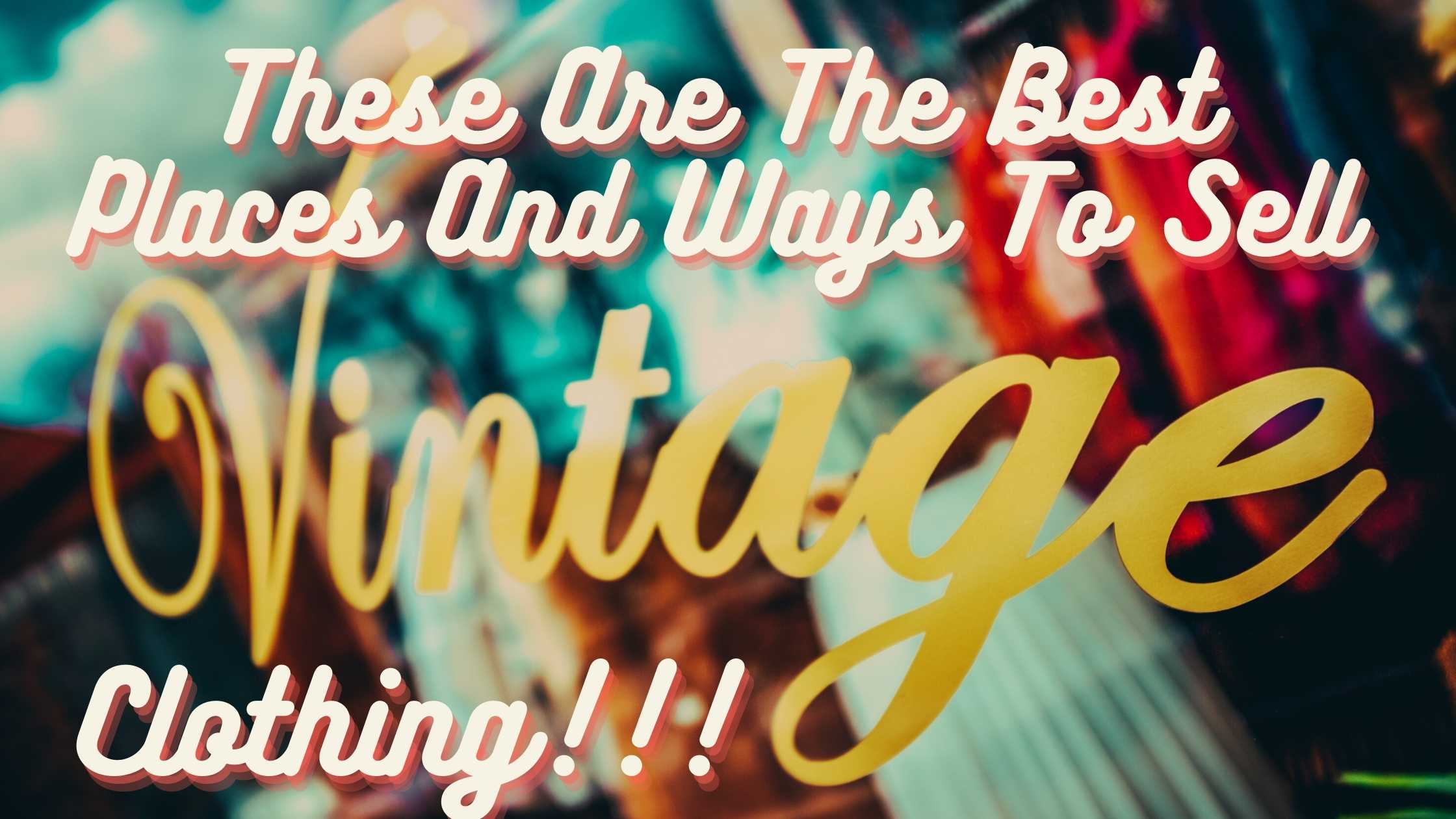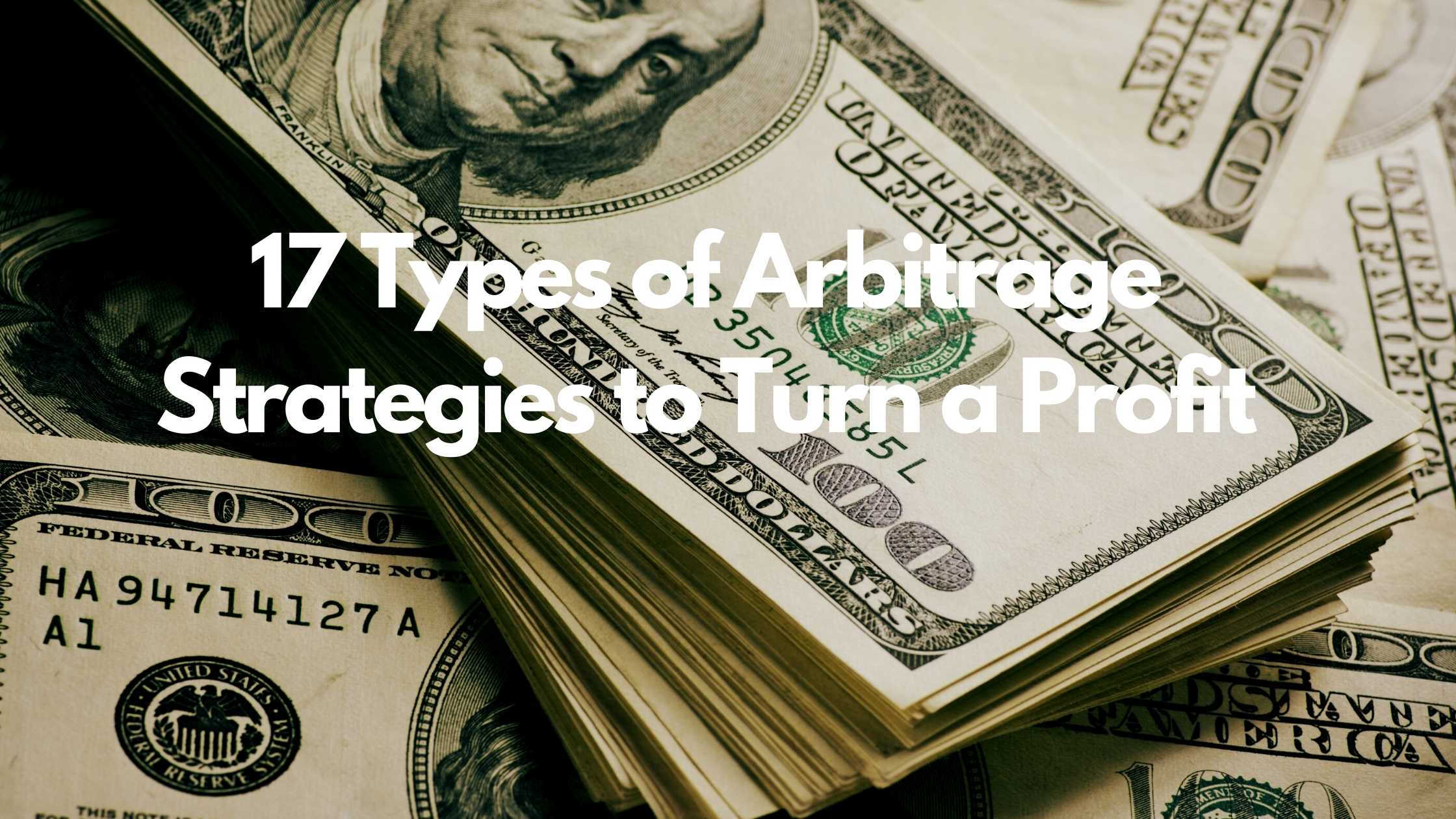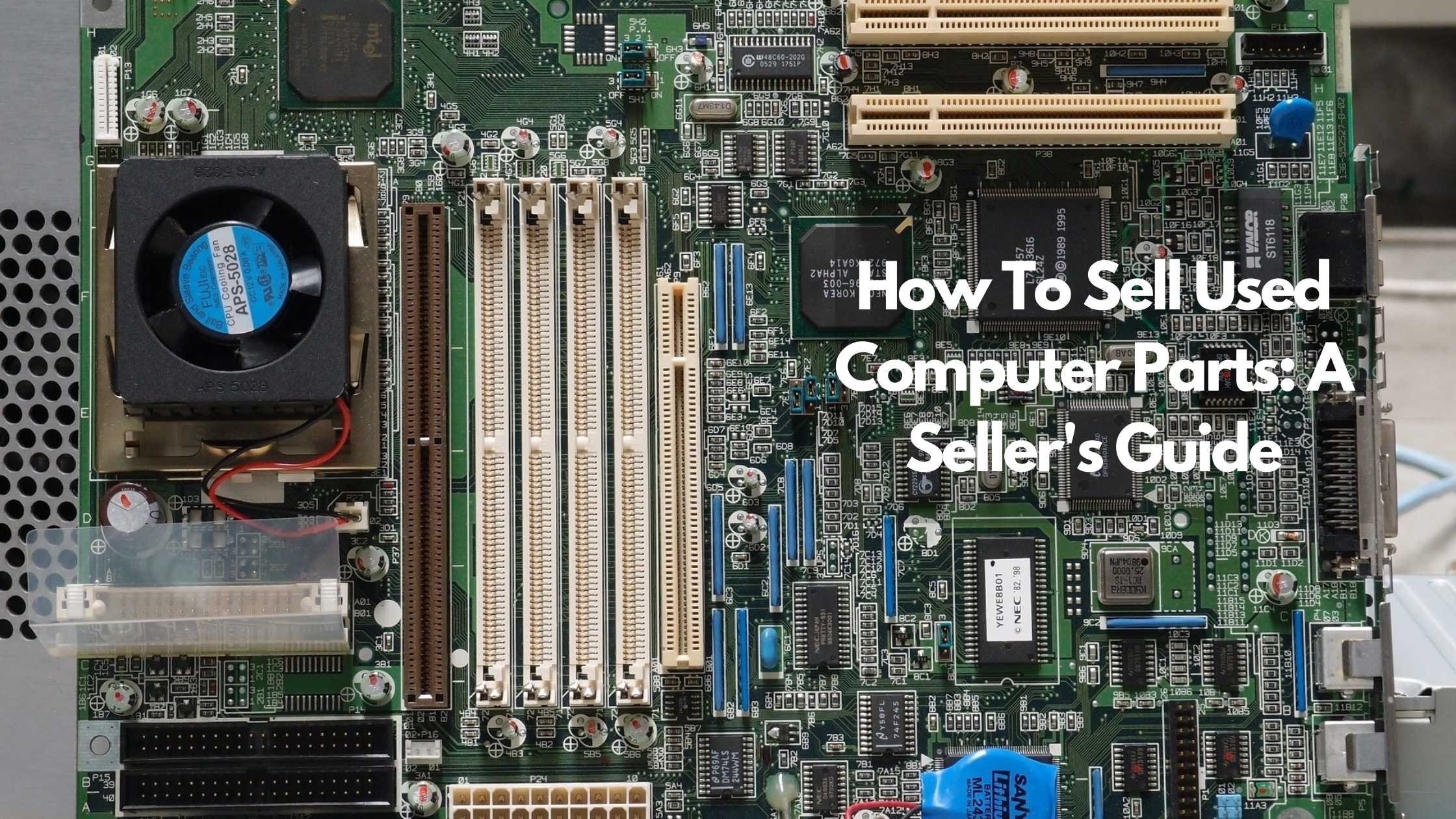
These Are The Best Places And Ways To Sell Vintage Clothing

For the budding entrepreneur, vintage clothing resale has become a huge industry. Resale has been growing steadily for a few years now, outpacing standard clothing retail. Experts state that the resale clothing market is going to bring in over 60 million dollars in 2024. Even during the Recession, resale has managed to grow as people turn to retail therapy and online shopping.
Currently, the best places and ways to sell vintage clothing are:
- Resale Clothing Sites and Apps: Poshmark, ThredUp, Asos
- Online Marketplaces: Ebay, Etsy, Sheepbuy
- Brick and Mortar Second Hand Stores
- Flea Markets
The options are seemingly endless. The internet is full of options for you to start selling vintage clothing online. And, they make it easier to grow your business and brand than ever before. If you are looking to make a living doing what you love and doing it on your terms, read on.
Here we have some of the best options to get paid for that closet of vintage.
Resale Clothing Sites & Apps: So Many Options
It seems that every day there is a new way to sell stuff online. This can seem a bit overwhelming when you are first getting into the game of second-hand resale, but it is actually a good thing.
There is something for everyone on the world wide web, and that holds true for those of us that sell vintage clothing. Know that somewhere out there is an option that’s perfect for you. The only tool you need to get started is your smartphone.
The most beautiful thing about these services is that they cater to clothing. That means there’s no sifting through listings of car parts and antique vases for your potential customers. Just clothes. Here are some of the big names in clothing resale right now.
Poshmark
If you’ve shown any interest in selling clothing online, chances are pretty good that you’ve heard of Poshmark by now. Poshmark allows buyers to look directly into the closets of sellers. Big brand fashion is the name of the game on Poshmark.
While vintage isn’t on the forefront over at Poshmark, it is still a huge platform that helps sellers move a lot of clothing and accessories. To sell vintage effectively, it would be wise to cross-list on other sites. This will drive more traffic to your items, which equates to more action.
The fees are pretty nominal: A $2.95 flat fee for anything under $15, and a simple 20% fee on anything over that. They also handle the shipping label, which is a convenient and time-saving feature. Long time sellers on the older platforms can tell a lot of stories about the headaches involved in shipping labels.
ThredUp
If Poshmark is a bit too involved, ThredUp might be more your style. They mail you a bag, you fill it up with the clothing that you wish to sell, send it to ThredUp, and they do the work. Easy peasy lemon squeezy.
They handle the inspection, photography, listing, and shipping. All you have to do is send them sellable clothing and, when it sells, you get paid. They collect a cool 20% of the sale for doing all the work. Not too shabby. For those of us who enjoy sourcing, but hate everything else involved, ThredUp could be your golden goose.
Asos Marketplace
If your vintage niche is of the edgy and retro variety, Asos Marketplace might be your spot. One look at the homepage tells you what they’re about. They specialize in vintage clothing marketed towards the hip twenty-somethings looking for one of a kind pieces to make a statement.
You get access to their excellent site that hits parts of the market that more traditional apps and marketplaces aren’t aimed at. With Asos, you run your own online vintage boutique, and the whole thing really stands out from the crowd. They charge a 20% fee when your item sells.
There are truly an enormous amount of apps and sites to sell your vintage clothing. You might need to poke around and research a few different options before you commit, but you are bound to find something that fits your niche and your business strategy.
Online Marketplaces: Selling With The Giants
Ebay paved the way for all of these other platforms, and they are still going strong. What sets the online marketplaces apart from the numerous apps and consignment sites is their traffic.
These marketplaces aren’t focused on just one product like clothing; they sell it all. If there were a brick and mortar location, Poshmark would be a medium to high-end clothing consignment store. If eBay existed in the real world, it would be an insanely massive shopping complex. And this goes for the other marketplaces that are available online.
Ebay
Electronic Bay has been around a long time, since the early days of the internet. Since 1995, a lot of people have made their living selling on the site. Ebay has a tried and true infrastructure in place that can make listing and selling convenient and quick, but it comes with a price.
- There are fees for listing : $0.30 per listing
- Fees on the sale of an item : 10% of an items sale price
- And a fee when you collect your payment : 2.9% or $0.30 fee
New sellers can really feel the sting of these fees when starting a store on the platform. With the added downside of the sheer number of listings on eBay’s platform, it can take a lot of time and energy to succeed on vintage resale business through eBay. But, it can be a great platform once you’ve built up your brand and got some regular sales coming in.
Etsy
Etsy came along to help fill the need of sellers who make their own goods and cater to odd or unique niches. Such as…vintage clothing! Since then 2005, the platform has grown in popularity, and many people that once clung to eBay jumped ship to Etsy.
Since the platform focuses more on home goods, arts, jewelry, and fashion, it makes sense as a good place to sell vintage clothing.
Etsy’s fees, while lower than eBay, can still amount to a little more than the newer, clothes-only boutique sites.
- Item Listing Fee : $0.20
- Transaction Fee : 5% of an items sale price
- Payment Processing Fee : 3% + 0$.25 to collect your payment
Selling on Etsy feels more like a cool online flea market than the gigantic shopping mall that is eBay.
Sheepbuy
Sheepbuy is a new player in the online marketplace game. This simplified site makes it super easy to buy and sell. It has the flavors of a Facebook marketplace or an upgraded Craigslist, without the awkward customer communication or the flakiness of meeting a stranger in the CVS parking lot. And that is not all that makes Sheepbuy an enticing place to sell.
It is free to start selling on Sheepbuy, and which makes it a good place to test the waters on your vintage endeavor. And there is no per item fee structure set in place. If you aim to sell more, you only need to pay a low monthly membership. These are there options:
Basic Membership: Free
- 3 listings
- No fees
Starter Membership: $2.99 per month
- 25 listings
- No fees
Plus Membership: $12.99 per month
- 150 Listings
- No fees
So, you can see that for those just getting into the reselling game, or those that are looking for an online marketplace experience without the outrageous fees, Sheepbuy is looking pretty good.
They are a new platform still in their beta stage, which means that your market is not saturated yet. The vintage clothing market is a competitive one, so cornering a new market can be key to driving sales. For those looking to break into vintage clothing sales, it is a supremely low risk option that looks very promising.
Brick And Mortar Stores: Real Live Shopping
It may seem that online is the only way to go, but there are still a few promising options in the real world. Remember stores? Ones that you can walk inside and view merchandise? Those are still around, and they are still a way to sell vintage clothing.
Working with business at brick and mortar locations can be a bit intimidating at first since you have to meet everyone face to face. Still, it can be very rewarding and bring as much strength to your brand as selling online.
There are two main types of shops that you can make money off of your sourced pieces.
- Consignment Shops
- Pawn Shops
Consignment Shops
In a consignment shop, the owner sells your goods within their business. You own the product, they sell it, and you get paid. They do get a commission, of course. If you’ve already started sourcing vintage clothing, you’ve more than likely been in one of these shops.
Fees are steeper than selling online, but for a good reason. You are getting to put your items in a store, a usually carefully curated store, and people can interact with your products in person. And let’s not forget, they do a lot of the work for you. Cleaning, sales, operating the shop, markdowns, promotions, and if you keep bringing them great products, they will keep handing you money.
A consignment store can be a great place to build your brand and figure out your niche. It is a place that you can play around with graphics and logos on sales tags, and really push your brand with your displays and decor.
There are of course a few downsides to this model. Good foot traffic is needed to make sales, so if there aren’t a lot of shoppers, there isn’t any money to be made. In some locations these stores are popular shopping destinations, while others can stagnate. And unless your products have a decent markup, the commissions fees and markdowns from stuff that doesn’t sell can really eat into the budget.
Pawn Shops
When you think of a “pawn shop”, you probably don’t think “vintage clothing.” The first thing that comes to mind is old guitars, gold wedding bands, and a wall of microwaves. However, there are actually clothing specific shops that may be considered pawn shops for clothing.
Plato’s closet is one popular example that you may have heard of. They work just the way any pawn shop does. You bring in the clothes you wish to sell, and they make you an offer, simple as that.
Is this a way to grow your business and strengthen your brand as a vintage seller? No. Is it a way to get money for vintage clothes? Yes…sometimes.
Most of these places pay the most for popular, modern brands in excellent condition. But they will still pay for unique vintage pieces in great condition. Just don’t expect their offers will be as much as you’d hoped. But if you need to make a buck in a pinch, this is an option.
Thrift Stores: Not To Be Forgotten
Some local thrifts stores are starting to look a bit more like consignment shops. Some of these local places might let you set up for consignment style sales in their shops, so you might want to check these out as well.
At thrift stores, you can also offload deadstock, which takes up precious inventory space. By donating them to a local thrift, you get a receipt to use as a tax write off come April.
This can help you with your taxes and, at the same time, do some good for your community. Some shops offer credit when you donate as well, which can be used towards sourcing. So, don’t forget about these options when visiting your thrift shops.
Flea Markets: Circus Of Sales
Flea markets, antique malls, swap meets, vintage sales, etc. There are many names for basically the same thing. At a flea market, you rent a booth or table space and sell your products from there. These can be a great place to make a buck selling vintage clothes and can be a lot of fun.
First things first, just as you explore when you source vintage products to sell, you must explore your flea market options. Chances are pretty good that there is a flea market near you, and in larger cities, there can be dozens.
Each one of these places, whether they are open-air markets, inside big canvas tents, or in an old airplane hangar, they all have distinct personalities and clientele. You’ll need to do some footwork to figure out which place will be worth your investment.
Keep a lookout for products similar to yours and clientele that you think would gravitate towards your display.
Secondly, you’ll probably need to do some paperwork, legal paperwork. When you sell your product at a flea market, you rent the space, and all of the work is done by little old you, as opposed to consignment where you pay them a fee to run the business and sell your wares.
This means you’re going to more than likely operate as your own business than under the umbrella of an existing business. If that is your dream, this could be a great place to start. Most flea markets should have an office or some sort of on-site management that should be able
to tell you what hoops you need to jump in order to set up and sell.
Lastly, you sell what you’ve got. If you’ve sourced your clothing, signed the necessary paperwork, and paid your booth rent, you’re ready to go. Just like a consignment store, this is a great opportunity to promote your business with your unique tags, graphics, and how you arrange your display.
Better yet, you should have even more control over how you display your product than you would at a consignment shop. Not only is this a great brand-building opportunity, but you can drive traffic towards your online platforms as well. Cross posting, or selling on multiple platforms, is a huge way for you to boost sales and move products.
This article goes more in depth about the ins and outs of selling vintage at flea markets, antique malls, and the like. It is well worth checking out if flea market sales pique your interest.
In Conclusion
You’ve got a ton of options when it comes to selling vintage clothing both online and in shops in your town. All you really need to start is some clothes, a smartphone, and some good old fashioned elbow grease. The clothing resale apps are an excellent place to start, as their fees and commissions are pretty low.
The online marketplaces are a great place to start selling more across multiple platforms and are a great way to build your boutique brand. And finally, the brick and mortar places are a good way to see how things work in real-time, while building some recognition in your own community. So, get out there and find something that matches your personality, style, and mission. These clothes aren’t going to sell themselves.
Recommended Blog Posts:
TRENDING


Online Arbitrage for Beginners (Step-by-Step Guide)

17 Types of Arbitrage Strategies to Turn a Profit

Is Retail Arbitrage Legal?

How to Turn Textbook Arbitrage into a Business for Profit

How Can You Tell if a Book is a First Edition?

What to Do With Your Jigsaw Puzzle When Finished?


